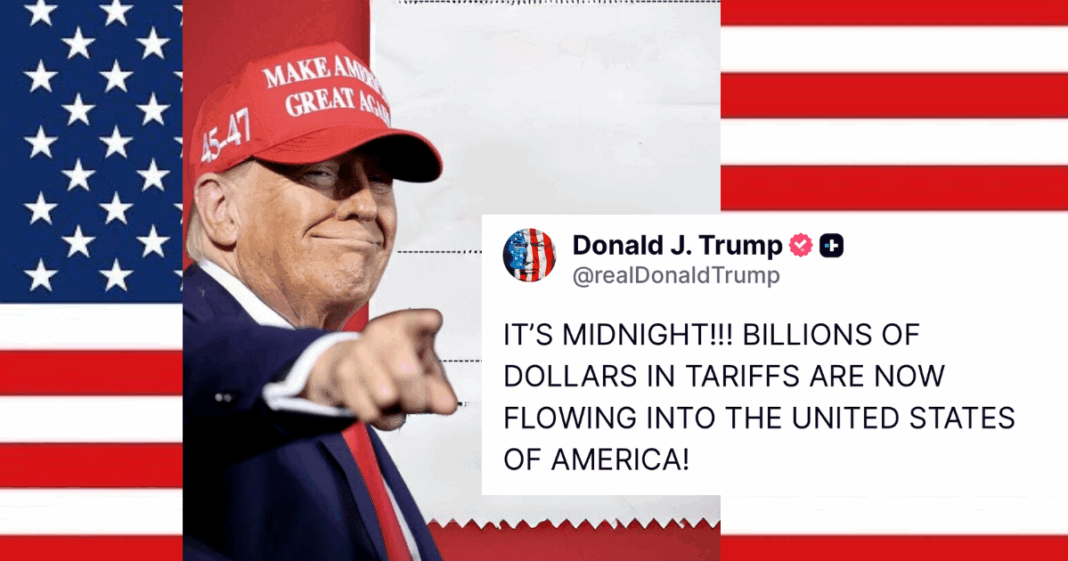- New U.S. tariffs ranging from 15% to 41% took effect Thursday under Trump’s latest executive order
- India, Brazil, Japan, EU, and South Korea are among key countries impacted, while sectors like chips and steel remain separately targeted
- Industry groups and economists warn of rising prices and pressure on small businesses as U.S. consumers face the burden
What We Know
Dozens of economies were hit Thursday by steep new U.S. import tariffs under an executive order signed last week by President Donald Trump, drastically escalating his administration’s already aggressive trade policy. The new duties — described as “reciprocal” — range from 15% to 41% depending on the country and product category.
According to Agence France-Presse (AFP), the move affects a wide array of countries including close allies like Japan and South Korea, as well as economic blocs like the European Union. India faces a 25% tariff, which will double to 50% in three weeks, while Brazil, Syria, Myanmar, and Laos are now subject to tariffs as high as 41%.
Trump celebrated the rollout on Truth Social just after midnight, posting: “IT’S MIDNIGHT!!! BILLIONS OF DOLLARS IN TARIFFS ARE NOW FLOWING INTO THE UNITED STATES OF AMERICA!”
What They’re Saying
Industry groups have warned the measures could severely hurt small businesses, especially as back-to-school shopping ramps up. Georgetown University trade policy expert Marc Busch told AFP that U.S. companies may have initially absorbed the cost during the 90-day delay period, but with inventories running low, those costs are now likely to hit consumers directly.
Meanwhile, Japan and the U.S. remain at odds over the timeline for lowering auto tariffs despite a recent deal. According to AFP, Washington has not provided firm dates for reduced duties, and Japanese carmakers are still facing a 25% levy under separate orders. A White House official said Japan’s 15% reciprocal tariff is being applied on top of existing duties.
The European Union is pushing for wine industry exemptions, with the U.S. Wine Trade Alliance warning the sector’s inclusion could hurt restaurants and small producers. “Wine sales account for up to 60 percent of gross margins of full-service restaurants,” the group said in a letter to Trump, as reported by AFP.
Global Repercussions and Legal Fights
Trump’s latest tariff order also opens new fronts. India’s additional 25% duty — doubling existing tariffs to 50% — is aimed at punishing New Delhi for continuing to purchase Russian oil. A clause in the order threatens other countries “directly or indirectly” importing Russian oil with similar measures.
Brazil was also targeted following former president Jair Bolsonaro’s coup trial. U.S. tariffs on Brazilian imports surged from 10% to 50%, though orange juice and civil aircraft remain exempt. However, Brazilian coffee, beef, and sugar are hit directly.
Legal challenges are already mounting, with opponents questioning the president’s authority to invoke emergency economic powers to impose such sweeping tariffs. Some of these lawsuits are expected to reach the U.S. Supreme Court.
Trump Raises Tariffs To 50%: What It Means For India
Putin-Trump Meeting Venue Agreed, Kremlin Says as Ceasefire Talks Advance
Follow Virginia Times for regular news updates. Stay informed with the latest headlines, breaking stories, and in-depth reporting from around the world.
A global media for the latest news, entertainment, music fashion, and more.















